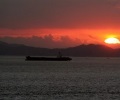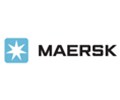Casualty response and sustainable solutions amidst a pandemic

Gard’s role as Claims Lead for Hull & Machinery, and P&I insurer
M/V KAAMI was on a voyage from Drogheda, Ireland to Slite, Sweden with a cargo of 1,927 metric tons of solid recovered fuel (SRF) pellets in bulk when she ran aground. Our client, Bergen based vessel owner Misje Rederi, notified Gard Marine & Energy at about 0400 in that morning. Shortly thereafter the Gard casualty response plan was activated, and it became a joint H&M and P&I response.
The first priority for Gard in any casualty is the safety of personnel. Initial search and rescue efforts of the UK Maritime and Coastguard Agency (MCA) focused on safely evacuating the crew from the vessel. The vessel was carrying eight Russian crewmembers who were airlifted without injury to safety. For any vessel casualty in UK waters, official approvals and decision making are conducted under the auspices of the UK Secretary of State’s Representative for Maritime Salvage and Intervention (SOSREP), with whom Gard, owners and salvors all liaise. The SOSREP is empowered to approve salvage plans and pollution prevention measures, and issue directions.
We were working from our homes in Bergen and Arendal at the time due to COVID-19 restrictions. We contacted professional salvors to ascertain availability of personnel and assets, and owners selected Resolve Marine. We were relieved to find they had a Salvage Master based in the UK, and both personnel and equipment able to make travel arrangements, notwithstanding the pandemic as the UK announced its lockdown on the date of the casualty. The Misje Rederi agreed to a Lloyd’s Open Form salvage contract with Resolve and preparations for the salvage operations began immediately. The Salvage Master arrived in Scotland on the 23 and the rest of the Resolve team arrived on the following day to begin preparing the salvage plan.
The Lloyd’s Open Form salvage contract is, historically, “no-cure, no pay” meaning that the compensation for success is based on the property values of the vessel, bunkers and cargo salved and consequently the salvor bears the risk that its out of pocket costs may exceed an award. There have been mechanisms in place since the late 1970s to ensure salvors are compensated where the residual property values are low but the salvage is nonetheless undertaken to prevent or reduce harm to the environment. To accomplish this, the Lloyd’s Open Form contains a “Special Compensation for P&I Clubs Clause” known as SCOPIC and it is the salvor’s option to invoke it.
Storm-force weather conditions prevented Resolve’s salvage team from boarding the vessel until 25 March. By that time, there had been further hull damage and the limited residual value in the vessel might not produce an adequate Article 13 LOF reward for the Ship for salvors, so SCOPIC was invoked which ensures compensation for salvors for environmental protection. A Ship salvage award is insured by the Hull and Machinery policy, but the SCOPIC element is insured by the P&I policy. A Special Casualty Representative (SCR) monitors the salvors expenditure.
Salvage becomes wreck removal
Resolve, the MCA, the owner’s representative and Gard all coordinated their planning closely with the SOSREP in formulating the salvage plan. With the crew safe, the next priority was to remove pollutants as quickly and safely as conditions permitted. Pollutants aboard included about 60 metric tons of marine gas oil (MGO) and the cargo of solid recovered fuel (SFR) pellets. SFR pellets are made from waste products and used for power generation. The pellets included about 45% of plastic which presented an additional risk to the marine environment.
The KAAMI was grounded on an exposed rock pinnacle and subjected to strong currents and a 16-foot tidal range. The MGO that escaped in the first few days after grounding, estimated to be about 25-30 cubic meters, was broken down in the rough weather conditions and the remainder of fuel had to be removed by lightering the vessel. The tide and current conditions allowed just a few hours for lightering vessels to remain safely alongside the KAAMI each dayfor the bunkers and cargo removal operation.
The fuel was safely removed, and attention turned to the SFR pellet cargo. ITOPF is an expert pollution response consultancy frequently used by Gard in casualty response. ITOPF assisted local authorities in preparing anti-pollution measures to collect the pellets in case the vessel should break up, and local fishermen were also included in the preparations. Thankfully, the lighterage operation was successful and the cargo removed without spillage.
Removing a grounded vessel can be accomplished by different methods. The KAAMI was a relatively small vessel and based on calculations by Resolve and experts, the refloating option was determined to be the safest and most cost-efficient method of removing the vessel. After the fuel and cargo were removed the hold was patched from the inside. Salvors used compressed air to gain enough buoyancy within the damaged compartments to allow the vessel to float off the rocks, thereby avoiding a more complex wreck removal operation had the vessel sunk in a navigation channel. She was then towed to Kishorn Dry Dock, a natural local facility, for dismantling.
From an insurance perspective and in simple terms, a salvage operation changes when owners decide to abandon the ship in anticipation that repair cost will be so expensive that the Constructive Total Loss limit (normally 80% of the insured value under Nordic Plan) is reached. H&M underwriters will have to either agree or reject such abandonment dependent on their assessment whether these criteria are met. The KAAMI was formally accepted by Gard as a Constructive Total Loss (CTL) on 21 April.
As a CTL, Hull & Machinery cover compensates the insured for the insured value of the vessel, and the casualty then becomes a wreck removal liability, a risk insured by the P&I policy, who acquire the benefit of any residual hull value. As Gard was handling the case under for both the H&M and P&I policies, the coordination and hand-over was seamless. P&I have the option to terminate SCOPIC and enter into alternative caretaking arrangements with salvors. LOF terminated when the vessel and cargo reached a place of safety at Kishorn.
Sustainable ship recycling and cargo handling
There is now a recognition that short term solutions for disposal of waste may be counter-productive, more expensive and hazardous for future generations. The shipowner members who own Gard fully support our commitment to the UN Global Compact and the UN Sustainability Goals. All casualty operations must now assess decision making against these sustainability targets which includes an environment/social/governance framework.
In compliance with EU waste recycling regulations, Gard obtained quotes from facilities in Europe for a complete vessel recycling. The vessel was not in a condition, however, to endure long-distance towing which presented an increased risk of environmental impact. Kishorn Port & Dry Dockwas at the time not on the list of EU-approved ship recycling facilities but in cooperation with the SOSREP and Scottish Authorities, it was decided Kishorn was the best option in this case. It is located close to the incident and has at least the same capability as the EU approved facilities. Kishorn is fully licenced in Scotland for all types of waste management, and regulatory approval was obtained upon terms the recycling agreement should contain a commitment to follow EU regulations and “first class western European recycling practice”.
Recycling the KAAMI was the first project in the Kishorn Dry Dock in many years and has been referred to in the local Scottish press as the “awakening of a sleeping giant.” The decommissioning work was done by John Lawrie Metals Ltd., the Aberdeen headquartered metal waste recycling and processing experts. Shipbreaking began on 18 May and was concluded on 30 June.
With an aim of zero to landfill, every piece of material John Lawrie Metals handled was assessed for reuse or repurpose before being processed for recycling. For example, the wheelhouse now overlooks the Kishorn Dry Dock and is used as a visitor’s viewing gallery. The steel from the ship was carried by sea to a steel mill in Europe for smelting.
Due to its moisture content the cargo of SRF pellets started decomposing and self-heating, and the advice from the manufacturer was that the cargo should not be loaded onto any vessel in its present condition. Based on this advice, ITOPF assisted with the investigation into several disposal options in UK. Two options for disposing of the damaged cargo in landfills in Scotland were considered, but the Viridor Energy from Waste facility in Manchester was at the time considered the more sustainable solution.
Cargo owners and shippers continued to look for alternative ways to re-use the cargo. Ultimately, they hired a specialist company to bail the cargo in smaller quantities, making it safe for further transport by sea. Owners provided another vessel to deliver the cargo to the original destination to be used for power generation.
Collaboration leads to a sustainable outcome
The casualty provoked an atmosphere of collaboration, with a strong local response to assist, notwithstanding the pandemic. The crew were safely rescued despite storm conditions by professional air response units. Local solutions were proposed, and regulations adapted. The strong relationships Gard has built over many years with the SOSREP, MCA, Resolve and ITOPF all combined to turn a potential environmental disaster into a successful outcome.
No casualty is welcome yet this one also had a silver lining for the local Scottish economy. Local fishermen and authorities assisted in pollution prevention measures. The recycling of the hull christened the newly refurbished Kishorn Dry Dock after 25 years since its last use and was the first project of this type for their sub-contractor, John Lawrie Metals.
We thank our insured and all participants in the casualty response and the vessel recycling for the professional performance and commitment to sustainable practices. And, all accomplished during a pandemic.
Source: Gard (http://www.gard.no/web/updates/content/30159042/casualty-response-and-sustainable-solutions-amidst-a-pandemic)

 Hellenic Shipping News Worldwide Hellenic Shipping News Worldwide, Online Daily Newspaper on Hellenic and International Shipping
Hellenic Shipping News Worldwide Hellenic Shipping News Worldwide, Online Daily Newspaper on Hellenic and International Shipping





















 PG-Software
PG-Software